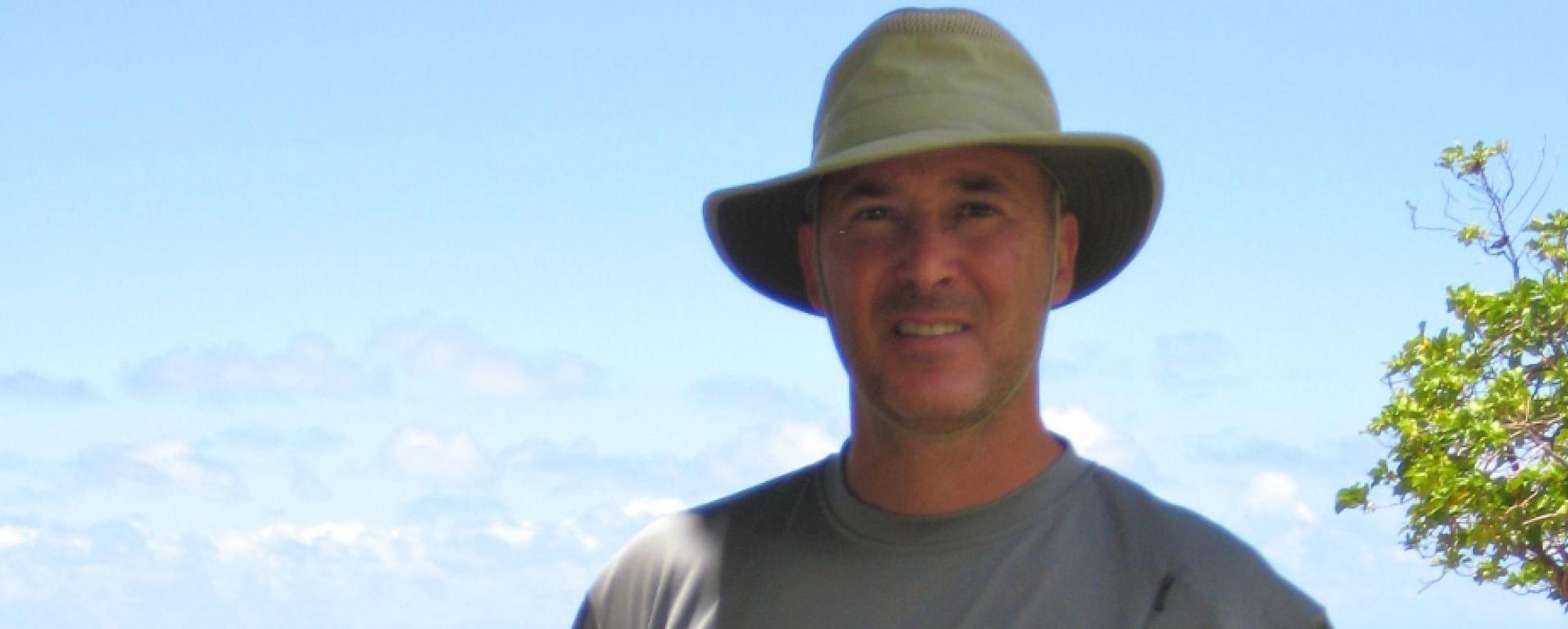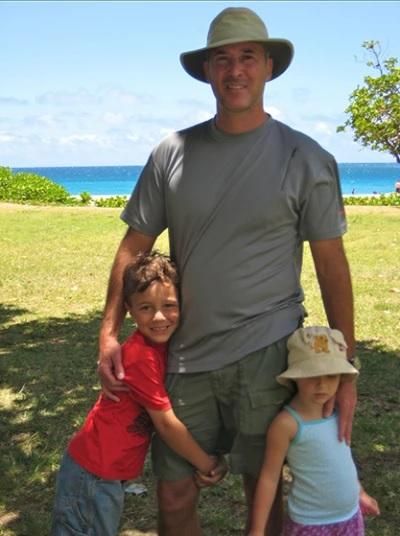New Findings on RSV Reinforce Need for All Infant Protection

By Dr. Bill La Via, U.S. Medical Director

Dr. Bill La Via and his children vacationing in Hawaii
When I became a dad, my role as a pediatric infectious disease specialist was enriched with new understanding and perspective. Seeing my own child struggle to breathe with a respiratory illness brought to reality for me what I had helped so many families go through.
There’s no denying the joy of becoming a parent. But it’s also wrought with anxiety (and sleep deprivation) as you navigate what it means to not just bring new life into the world but keep that life healthy and safe. As the saying goes, having a child, “is to decide forever to have your heart go walking around outside your body.”
No matter how many books you read, appointments you have, or classes you take, it can feel like you’re never fully prepared. Just ask any parent whose infant was diagnosed with respiratory syncytial virus (RSV). While RSV is a common respiratory virus (2 out of 3 infants will have contracted it by their first birthday1), a recent supplement that I contributed to, published by Sanofi in the Journal of Infectious Diseases (JID), illuminates how vast the burden of RSV truly is, and why we need to do better and more for all infants:
- The Total Burden of RSV is More Significant Than Previously Known: Our research confirms that RSV continues to be the leading cause of hospitalization for infants under one year old regardless of birth month, race/ethnicity or insurance status.2 But we also found that the full magnitude of hospitalizations is likely underestimated due to historical limitations in testing and surveillance.3 Our analysis also reveals that deaths outside the hospital related to RSV have likely been underreported4 – showing that the RSV mortality burden is a very real risk that may be underestimated.
- All Infants are at Risk of Serious RSV Infection: RSV has historically been thought of as a virus that primarily affected premature babies, but we were able to demonstrate that over 75% of the U.S.’ RSV burden occurs in healthy, term-born infants5 and that there are more deaths among full-term infants than in those that are born prematurely.6
- Data Reinforces Correlation Between Social Determinants of Health (SDOH) and RSV: Our analysis shows that heathy term infants with Medicaid insurance are particularly at risk for severe outcomes from RSV compared to those with commercial insurance, including a higher incidence of emergency department visits.5 We saw that this is also true for Native American and Alaska Native infants.6 While we continue to explore questions around why these groups are disproportionately impacted (though our current body of knowledge points to socioeconomics, geography and limited access to care, among other factors) what these findings do underscore is this: it is imperative that our preventive strategy for RSV include protection of all infants.
Early in my career as a physician, I recall asking my mentor why there were so many cases of RSV, which then led me to wonder, “why aren’t we doing more to prevent it?” This question has since influenced my entire career, as preventive and care solutions for RSV have remained limited and stagnant. Today, I feel that we are on the precipice of change.
While this supplement paints a striking picture of the burden of RSV, we know that the total impact cannot be fully understood due to a lack of standardized testing and reporting. Through this analysis, we are helping to champion this change. As we do, we as a scientific community are also working in passionate pursuit of new preventative options to help keep all infants safe from the worst consequences of RSV.
While new data like that uncovered in JID are essential to advancing our understanding of the RSV burden, so are first-person experiences. With that in mind, I encourage you to watch the video below. Stories like Anna’s are what fuel our resolve to change the RSV prevention paradigm.
With the combined forces of education and innovation, I am hopeful that we may soon be able to reduce the serious burden that RSV currently poses on infants, families and our healthcare system.
Reference
1Glezen WP, Taber LH, Frank AL, Kasel JA. Risk of Primary Infection and Reinfection with Respiratory Syncytial Virus. Am J Dis Child. 1986;140(6):543-546. doi:10.1001/archpedi.1986.02140200053026
2Suh M, Movva N, Jiang X, et al. Respiratory Syncytial Virus Is the Leading Cause of United States Infant Hospitalizations, 2009-2019: A Study of the National (Nationwide) Inpatient Sample. J Infect Dis 2022; 226(S2):S154–63.
3Suh M, Movva N, Bylsma LC, Fryzek JP, Nelson CB. A Systematic Literature Review of the Burden of Respiratory Syncytial Virus and Health Care Utilization Among United States Infants Younger Than 1 Year. J Infect Dis 2022; 226(S2): S195–212.
4Bylsma LC, Suh M, Movva N, Fryzek JP, Nelson CB. Mortality Among US Infants and Children Under 5 Years of Age with Respiratory Syncytial Virus and Bronchiolitis: A Systematic Literature Review. J Infect Dis 2022; 226(S2):S267–81.
5Gantenberg JR, van Aalst R, Zimmerman N, et al. Medically Attended Illness due to Respiratory Syncytial Virus Infection Among Infants Born in the United States Between 2016 and 2020. J Infect Dis 2022; 226(S2): S164–74.
6Reichert H, Suh M, Jiang X, et al. Mortality Associated With Respiratory Syncytial Virus, Bronchiolitis, and Influenza Among Infants in the United States: A Birth Cohort Study From 1999 to 2018. J Infect Dis 2022; 226(S2):S246–54.